14 Types of Oysters to Explore & Expand Your Horizons
Author: Anne Cowart | Editor: Omar Alonso
Review & Research: Jen Worst & Chris Miller
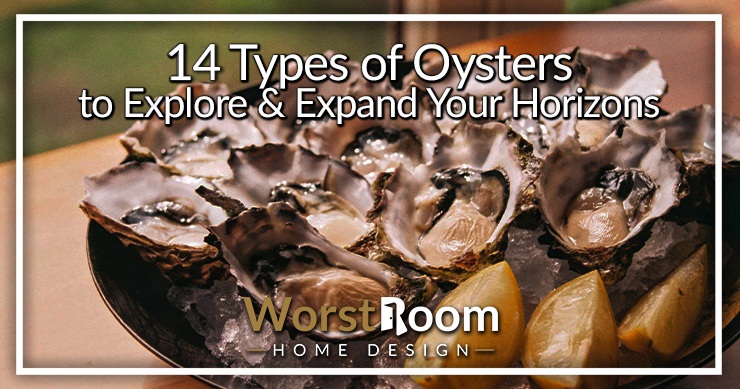
You either love oysters, or you hate them - there's no middle ground when it comes to these shellfishes! The types of oysters are one of the most popular seafood in the world, and it has various nutritional benefits as well.
They're primarily found in different marine habitats and change their features based on the habitats. As of now, there are hundreds of different types of oysters out there in the world.
Since the kinds of oysters are often decided by how they're cultivated, it's impossible to jot down all the various oyster names and types.
What we did, however, was jot down the most common oysters that you actually have a chance of getting a hold of and came up with this list. Now it's time for you to go through these 'Ocean Mollusks' and their different types.
14 Types of Oysters
People like to eat oysters for many reasons: they're high in protein, omega-3, antioxidants, electrolytes, and other vitamins & minerals while being low in calories.
We went through most oysters' species and came up with the leading 10 that are most popular in the world. Here's a detailed description of them.
Pacific Oysters
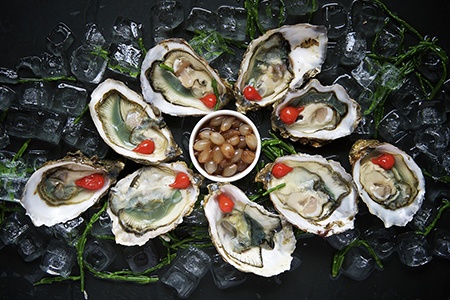
Also known as the Japanese Oyster or the Miyagi Oyster, this is the most common type of oyster in the world.
Originated from the Pacific coast of Asia, this oyster type has turned out to be a very cosmopolitan one due to its widespread cultivation. It's now primarily cultivated in the US Pacific Coast and the West Coast alongside regions of Asia and Europe.
Pacific Oysters are easily identifiable because of their attractive grey-blue shell with highly fluted edges. Its interior is white-ish and consists of deep purple muscle scars. These oysters are commonly found on the dense mats of rocks and soft substrates.
One of the reasons why these different types of oysters are so popular is because they grow pretty fast. It takes them barely 2-4 years to grow to a standard size of 10-15 cms.
Moreover, the flavor and aroma of different Pacific Oysters are unique, enhanced by the types of spices you use when cooking. They're a bit sweet-ish in general and have melon-like creamy touch in the taste. They're called Crassostrea Gigas by the scientific community.
Belon Oysters
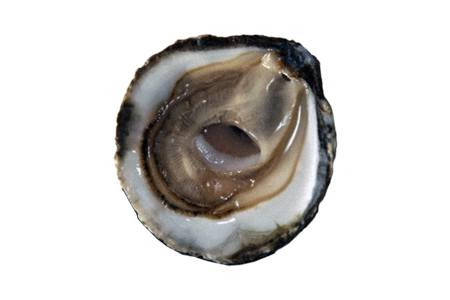
Now we have an Oyster from Europe, and it's indeed one of the most common items in European seafood cuisine. Also called "European Flat Oysters, " they have originated from the Belon river in the Britanny region.
Interestingly enough, Belon Oysters are a result of a supposedly failed experiment done by North American scientists. They're called Ostrea Edulis, scientifically speaking.
As the surname suggests, Belon Oysters have round-shaped flat shells with less defined cups. They're often called plates because of their flat shape and similarities to saucers.
These types of oysters have light brown meat that has a creamy and metallic flavor. They have sweet overtones and a sort of 'coppery' finish.
Known as Crassostrea Virginicas in scientific terms, they include oyster types like Bluepoints and Wellfleets, and when all added together they make up around 85% of the total harvested oysters in the United States.
Eastern Oysters
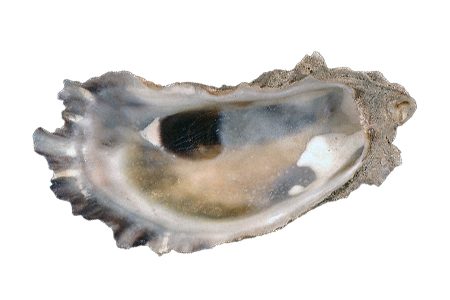
Also known as 'Atlantic Oysters,' this is a North American indigenous oyster primarily harvested in the US and the Gulf of Mexico. Eastern Oysters have a hard calcium-carbonaceous shell to protect themselves.
These are some of the biggest oysters in the world and have a crisp texture and savory finish.
Eastern Oysters are what we call 'foundation species' because they're technically the ecosystem engineer in the West Atlantic regions.
These pear-shaped oyster varieties can grow up to 10 cms in length, although this species has different sizes and shapes. When consumed, they give you a salty and metallic flavor.
The shell of Eastern Oysters has a white interior, a dirty gray exterior, and a deep purple muscle scar. The muscle scars also come in different colors like brown, cream, and forest green. Eastern Oysters are more compatible with warm water, as they grow faster there.
Well Fleet Oysters
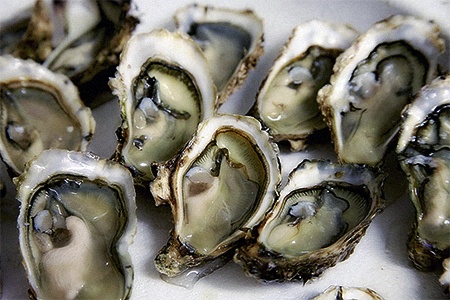
Unlike most oysters in our list, Well Fleet Oysters actually prefer colder waters, and they thrive in rich, cold water in the Canadian Maritime provinces.
They have a sweet, meaty flavor and a very plump texture. It is said that the cold water helps them build up the glycogen that keeps the meat firm and tasty.
These oysters have a mild, crisp flavor with a very high level of brininess. They can grow up to 3.5 inches in size, perfect to be eaten with those oyster types of forks you see in seafood restaurants.
Kumamoto Oysters
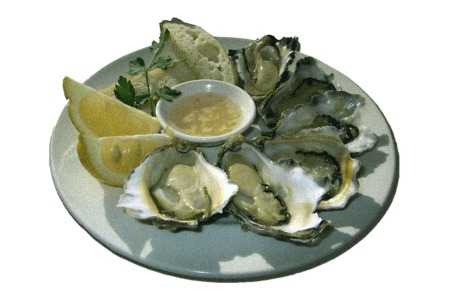
Even though it originated in Japan, Kumamoto Oysters aren't the same as the Pacific Oysters. The taste and texture of this oyster differ significantly from Japanese Oysters.
It has irregularly shaped shells and unequal valves. Compared to other oysters, they're pretty small and can reach up to only 60 mm at max. These types of oysters are known as Crassostrea Sikamea, scientifically.
The shells of these oysters are tumbled, round, and green-colored. The creamy meats of Kumamoto Oysters have a mild salty flavor alongside a honeydew finish. These oysters are often called the 'Chardonnay of Oysters,' giving you a fruity flavor and exquisite taste.
Kumamoto Oysters are one of the most popular seafood dishes in the Pacific Northwest regions, and they only grow in these waters. They're not compatible with cold waters; hence they require warm water in Japanese seas.
Olympia Oysters
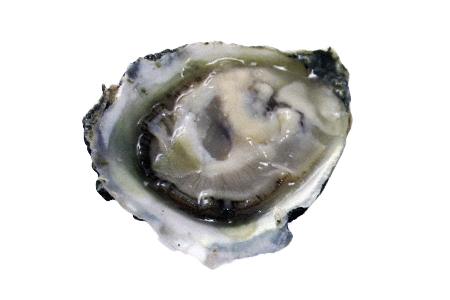
From Asia to Europe to America - you can find different types of oysters everywhere. Here, we have a kind of oyster that is originated from the Northern Pacific coast of North America.
Named after the Olympia area of Washington, this oyster is also called Rock Oyster and Native Oyster. They're very popular as cocktail oysters around the world.
Generally, the shells of Olympia Oysters are rounded or elongated. Their shell color can range from purple-black to yellow stripes or white-brown.
The flesh of these oysters has either a white-ish or light olive-green color. It is the smallest species of oysters, as you can compare them with the size of a nickel.
But size doesn't matter when it comes to oysters; taste does. And Olympia oyster has that creamy texture and a unique blend of flavors. Once consumed, you get a copper and celery flavor alongside a metallic taste.
They're known to the scientific community as Ostrea Lurida and Ostrea Conchapila. They're the only oyster that's native to the United States' west coast. They were thought to be extinct after being collected during the Gold Rush period.
Sydney Rock Oysters
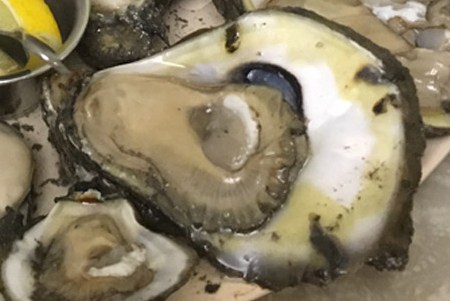
We've covered oysters from almost all the continents now, so why not Australia? Now we have these oyster varieties that are also called 'Auckland Oysters' because they were first found there.
These oysters grow well in sheltered bays like Harvey Bay or Wingan Inlet. They're also called "Rock Oysters" because of their shell texture and their long lifespan.
These are also smaller amongst other oysters with 6-8 mm shell height, but they're pretty heavy in size. An average Rock Oyster can weigh up to 60 grams over the course of three years.
The meat has a less salty, flinty flavor, and the muscle scar is pale. You can find these oysters all the time in a year, but their peak season is from September to March.
Sydney Rock Oysters have thick and smooth shells with tiny teeth. In taste, they're similar to Kumamoto Oysters with mild-sweet flavors and deep cups. They can live up to two weeks even after shucked - such is their longevity.
Beausoleil Oysters
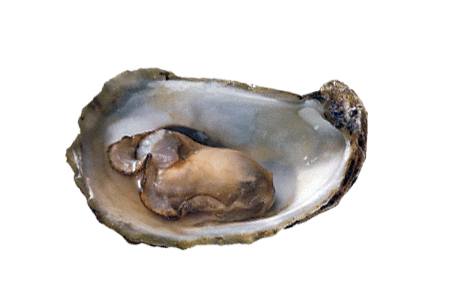
Beausoleil means beautiful sun in English. The reason behind naming this Oyster Beausoleil is that the shells' shape and color give you a sunny vibe. They're one of the most unique types of oysters in this sense.
This type of oyster can grow up to 2.5 inches and is often farmed in a tray suspension method. The method ensures that the shells of these oysters are hard enough with deep cups.
It is a unique type of Atlantic Oyster, and it has a very delicate flavor that many love. The mild saltiness and sweet finish of the exquisite taste make it a very popular dish all around Canada.
Blue Point Oysters
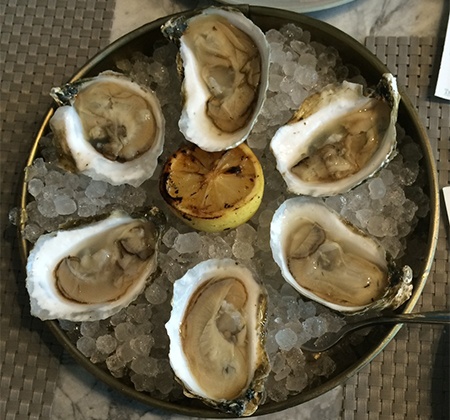
Another kind of oyster from the US is named after Blue Point, a town in Long Island. Widely harvested in New York and Connecticut, the oyster is a very common item in seafood palettes all over the US. The saltiness of Blue Point Oysters has different ranges and varies from place to place.
It is one of those oyster types with a relatively bolder, robust, and wild flavor, which was Queen Victoria's favorite. Strangely, I've enjoyed these alongside types of sausage, I guess like a creole dish.
These different kinds of oysters are medium in size and have a salty and meaty taste. Blue Point Oysters have a crisp and firm texture and will leave you with a salty-sweet aftertaste.
Misty Point Oysters
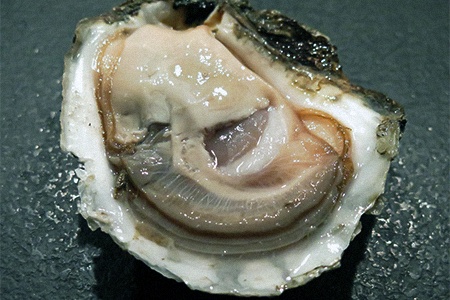
Simplicity is one of the best features of this type of oyster. They're raised and found in the eastern shores of Virginia, can grow up to 3 inches in size, and have a hard shell - nothing extraordinary. But they're still a popular choice as seafood because of their firm meat.
After all, you're going to eat the meat only. Speaking of meats, the Misty Point Oysters have their meats a bit deep into their cups and gives you a simple salty flavor with a hint of celery and fresh lettuce.
Fine de Claire Oysters
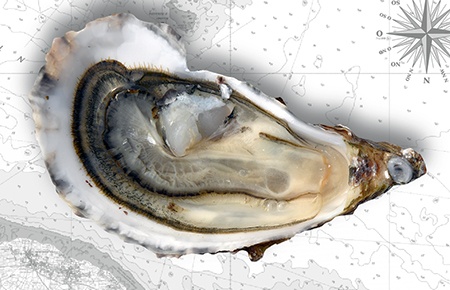
Fine de Claire oysters have their origins in France. They are fine and rich oysters whose meat tends to carry a sweet, meaty, crunchy, nutty and briny flavor. The liquid content of these oysters is also typically higher than other oyster varieties.
These oysters have long shells that can feature colors like brown, gray, green and white. The shells are hard and unevenly jagged, while the meat is light brown in color. These oysters are also sometimes cultivated and harvested in shallow salt ponds.
Pearl Oysters
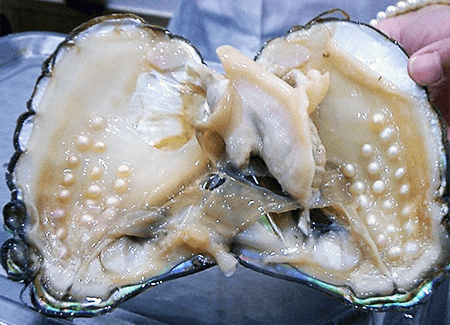
Pearl oysters refer to the Pinctada genus of oysters. These oysters are found in various parts of the world, such as the Persian Gulf, Indian Ocean, parts of Australia, Fiji, Myanmar, Mexico and others. Note that these oysters aren’t edible, making them different from other oysters on this list.
There are various species of pearl oysters. What makes them unique and different from true oysters (the other edible varieties) is that they contain pearls inside the shells that are often harvested for commercial purposes.
Many of these pearl oysters also have an inner nacre layer called the mother of pearl that is often used for decoration and architecture.
Shigoku Oysters
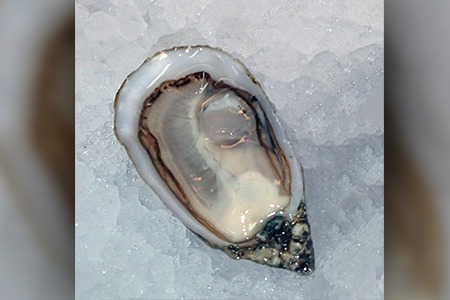
Shigoku oysters have deep shells. They are mainly found and grown in parts of Washington, such as in Samish Bay and Willapa Bay. These oysters can offer an interesting flavor palate, including sweet, salty, tangy and briny tastes with some hints of melon, adding a bit of freshness to it.
They are mainly harvested and eaten in the months of winter. The shells of these oysters are mainly gray and white in color, managing to grow to a size of around two inches. The shells are also quite even to the touch. They require a couple of years to grow before they can be harvested.
Dredge Oysters
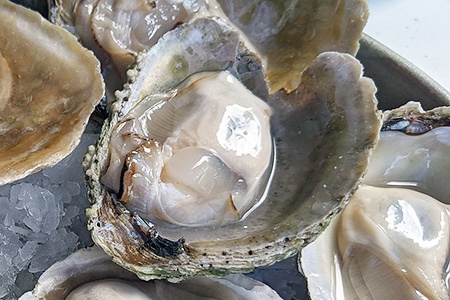
Dredge oysters, or Ostrea chilensis, are also called Bluff oysters or Chilean oysters. They mainly have their origins in Chile, although some are also native to parts of New Zealand. These oysters are typically flat and are popular for consumption where they are found and grown.
These oysters are relatively large, often growing up to four inches. The meat inside the shells of these oysters is quite creamy. It tastes sweet and briny and also contains some hints of the taste of seaweed, mainly due to its marine habitat. These oysters aren’t too strong in taste.
Types of Oysters for Every Plate & Palette
Oysters are one of the most flavorful seafood in the world, and the variety of their flavor can even be compared to different flavors of wine! While some people do not prefer the raw flavors, we love it, for sure! We hope our list of the types of oysters was of ample help to you. Bon appetite!




